
Filter News
Area of Research
News Topics
- (-) Artificial Intelligence (27)
- (-) Cybersecurity (12)
- (-) Emergency (1)
- (-) Neutron Science (42)
- (-) Quantum Science (12)
- (-) Security (10)
- (-) Transportation (25)
- 3-D Printing/Advanced Manufacturing (26)
- Advanced Reactors (4)
- Big Data (11)
- Bioenergy (25)
- Biology (30)
- Biomedical (12)
- Biotechnology (6)
- Buildings (14)
- Chemical Sciences (24)
- Clean Water (6)
- Composites (9)
- Computer Science (39)
- Coronavirus (4)
- Critical Materials (10)
- Education (3)
- Energy Storage (23)
- Environment (49)
- Exascale Computing (16)
- Fossil Energy (2)
- Frontier (19)
- Fusion (13)
- Grid (19)
- High-Performance Computing (33)
- Hydropower (3)
- Irradiation (2)
- Isotopes (17)
- Machine Learning (15)
- Materials (59)
- Materials Science (26)
- Mathematics (2)
- Mercury (5)
- Microelectronics (2)
- Microscopy (12)
- Molten Salt (5)
- Nanotechnology (16)
- National Security (21)
- Nuclear Energy (31)
- Partnerships (24)
- Physics (23)
- Polymers (9)
- Quantum Computing (12)
- Simulation (29)
- Software (1)
- Space Exploration (6)
- Summit (11)
Media Contacts
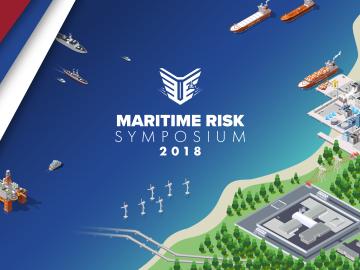
Thought leaders from across the maritime community came together at Oak Ridge National Laboratory to explore the emerging new energy landscape for the maritime transportation system during the Ninth Annual Maritime Risk Symposium.
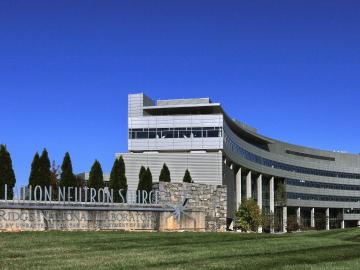
The Spallation Neutron Source at the Department of Energy’s Oak Ridge National Laboratory has broken a new record by ending its first neutron production cycle in fiscal year 2019 at its design power level of 1.4 megawatts.

Carbon fiber composites—lightweight and strong—are great structural materials for automobiles, aircraft and other transportation vehicles. They consist of a polymer matrix, such as epoxy, into which reinforcing carbon fibers have been embedded. Because of differences in the mecha...
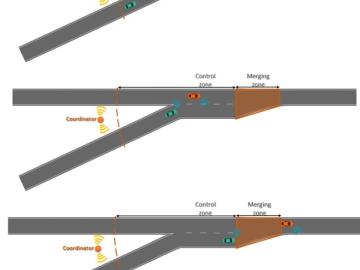
Self-driving cars promise to keep traffic moving smoothly and reduce fuel usage, but proving those advantages has been a challenge with so few connected and automated vehicles, or CAVs, currently on the road.

Scientists at the Department of Energy’s Oak Ridge National Laboratory used neutrons, isotopes and simulations to “see” the atomic structure of a saturated solution and found evidence supporting one of two competing hypotheses about how ions come

Long-haul tractor trailers, often referred to as “18-wheelers,” transport everything from household goods to supermarket foodstuffs across the United States every year. According to the Bureau of Transportation Statistics, these trucks moved more than 10 billion tons of goods—70.6 ...
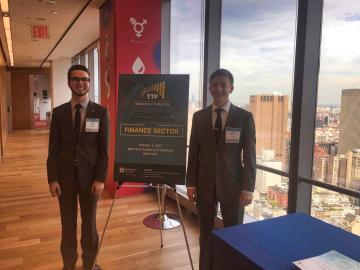
As technology continues to evolve, cybersecurity threats do as well. To better safeguard digital information, a team of researchers at the US Department of Energy’s (DOE’s) Oak Ridge National Laboratory (ORNL) has developed Akatosh, a security analysis tool that works in conjunctio...

Qrypt, Inc., has exclusively licensed a novel cyber security technology from the Department of Energy’s Oak Ridge National Laboratory, promising a stronger defense against cyberattacks including those posed by quantum computing.
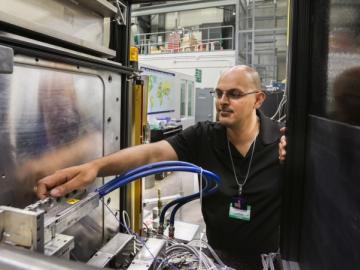
Kushol Gupta hopes to beat HIV’s defenses. A research assistant professor from the University of Pennsylvania’s Perelman School of Medicine, Gupta recently concluded an experiment at the Department of Energy’s (DOE’s) Oak Ridge National Laboratory (ORNL) he hopes will improve allosteric inhibitors of integrase (ALLINIs), a new class of HIV-fighting drug that inhibits the virus’s ability to reproduce.

The materials inside a fusion reactor must withstand one of the most extreme environments in science, with temperatures in the thousands of degrees Celsius and a constant bombardment of neutron radiation and deuterium and tritium, isotopes of hydrogen, from the volatile plasma at th...


